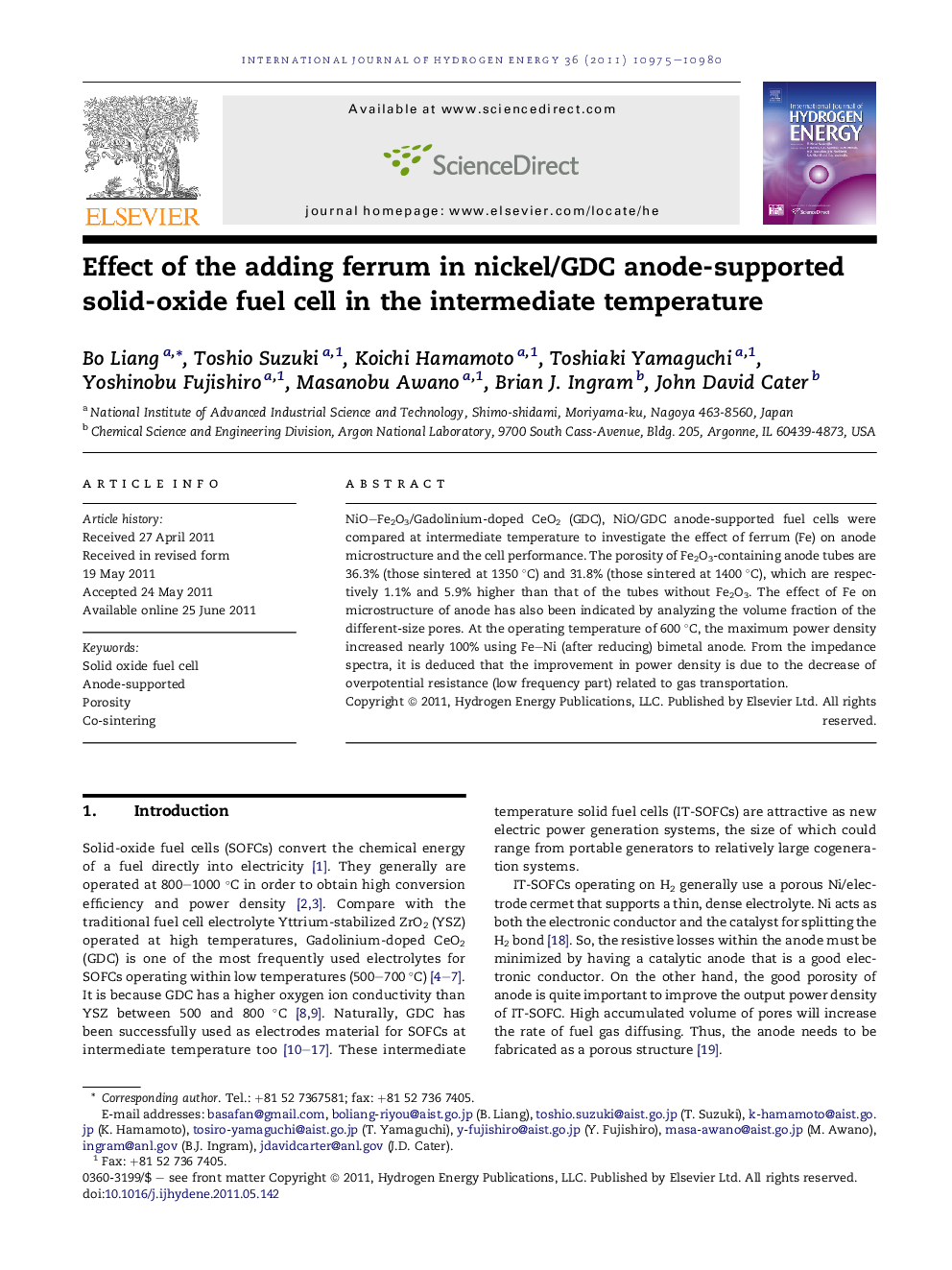| Article ID | Journal | Published Year | Pages | File Type |
|---|---|---|---|---|
| 1277567 | International Journal of Hydrogen Energy | 2011 | 6 Pages |
NiO–Fe2O3/Gadolinium-doped CeO2 (GDC), NiO/GDC anode-supported fuel cells were compared at intermediate temperature to investigate the effect of ferrum (Fe) on anode microstructure and the cell performance. The porosity of Fe2O3-containing anode tubes are 36.3% (those sintered at 1350 °C) and 31.8% (those sintered at 1400 °C), which are respectively 1.1% and 5.9% higher than that of the tubes without Fe2O3. The effect of Fe on microstructure of anode has also been indicated by analyzing the volume fraction of the different-size pores. At the operating temperature of 600 °C, the maximum power density increased nearly 100% using Fe–Ni (after reducing) bimetal anode. From the impedance spectra, it is deduced that the improvement in power density is due to the decrease of overpotential resistance (low frequency part) related to gas transportation.
► Ni–Fe bimetal as catalyst and electron conductor. ► The porosity of Ni–Fe bimetal tube is 31.8% co-sintered at 1400 °C. ► Main pores of anode increased their size during the co-sintering process. ► The maximum power density of bimetal cell increased to 0.49 W•cm−1 operated at 650 °C.
